This recipe for Grilled Dijon Mustard Pork Tenderloin makes an easy, but succulent main course. If you’re looking for the best recipe for grilled pork tenderloin, you’ve come to the right place! Everyone will love this recipe and it even works for those on a low-carb, keto, Atkins, gluten-free, dairy-free, or Paleo diet.
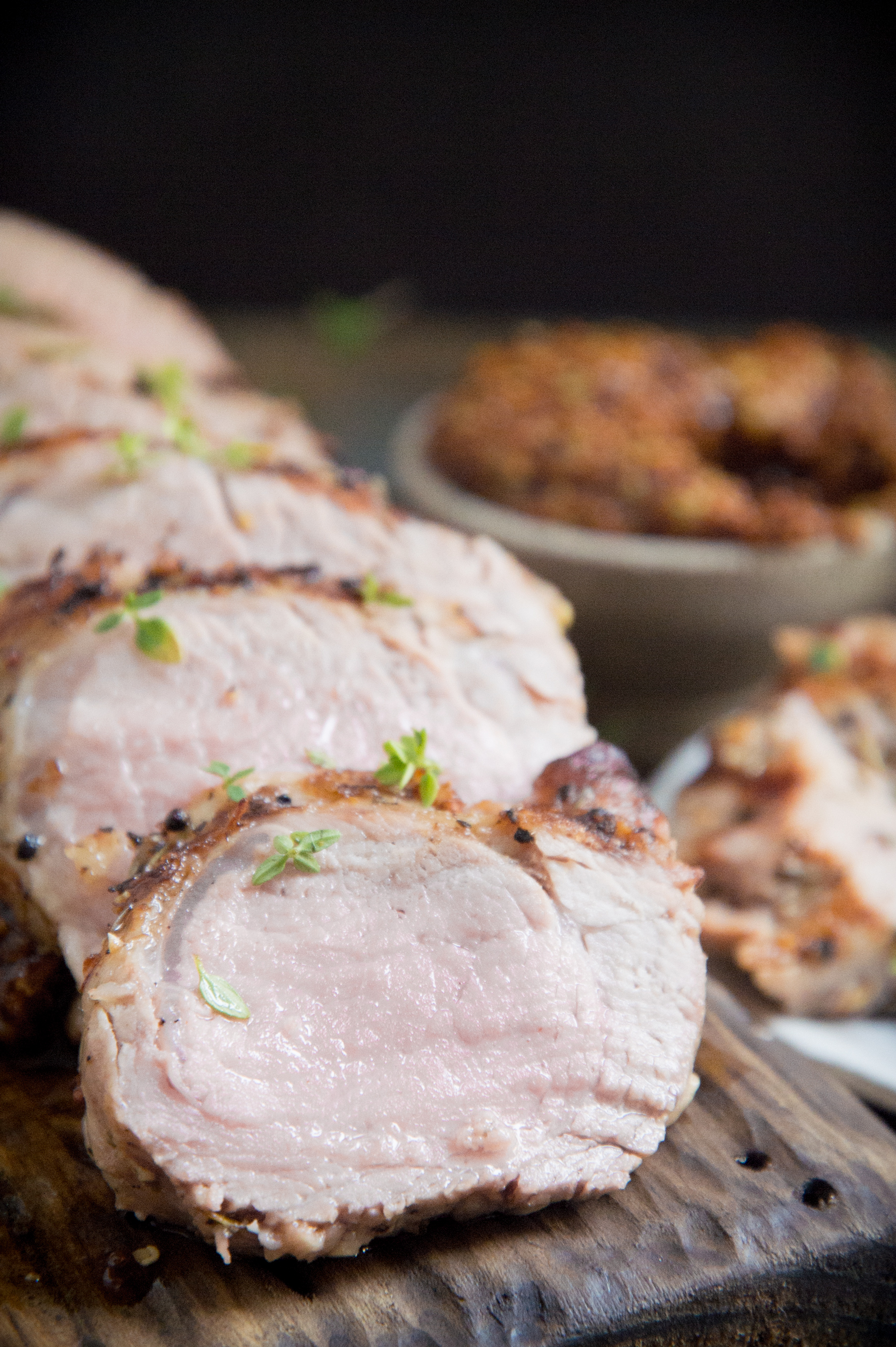
Disclaimer: Some of the links on this site are affiliate links which means we make a small commission from any sales to help keep the recipes coming! You do not pay any more. Thank you for your support!
The perfect grilled pork tenderloin
This recipe for Dijon Mustard Pork Tenderloin boasts flavors of dijon mustard, garlic, dried time and just a touch of red pepper flakes to add interest, but not too much heat. It’s grilled to rich golden perfection on the outside, but stays moist and tender on the inside.
I make this meal when I need a quick family dinner, but I also make it when I have a houseful of guests. It’s easy, but elegant.
Our recipe uses a cross between a marinade and a rub. I wouldn’t call it a marinade because it’s more like a thick paste than a liquid. By using a paste instead of a liquid, all of the meat gets flavored, but there isn’t a lot of excess liquid and expensive herbs that don’t go into the meat and get thrown away later.
I also wouldn’t call the combination a rub because it doesn’t contain sugar. Typically, but not always, rubs contain sugar or some other sweetener. Sugar doesn’t fair very well at high grilling temperatures because it burns into an unappetizing mess. Meat seasoned with rubs do better with low temperature, longer cooking time barbecue situations.
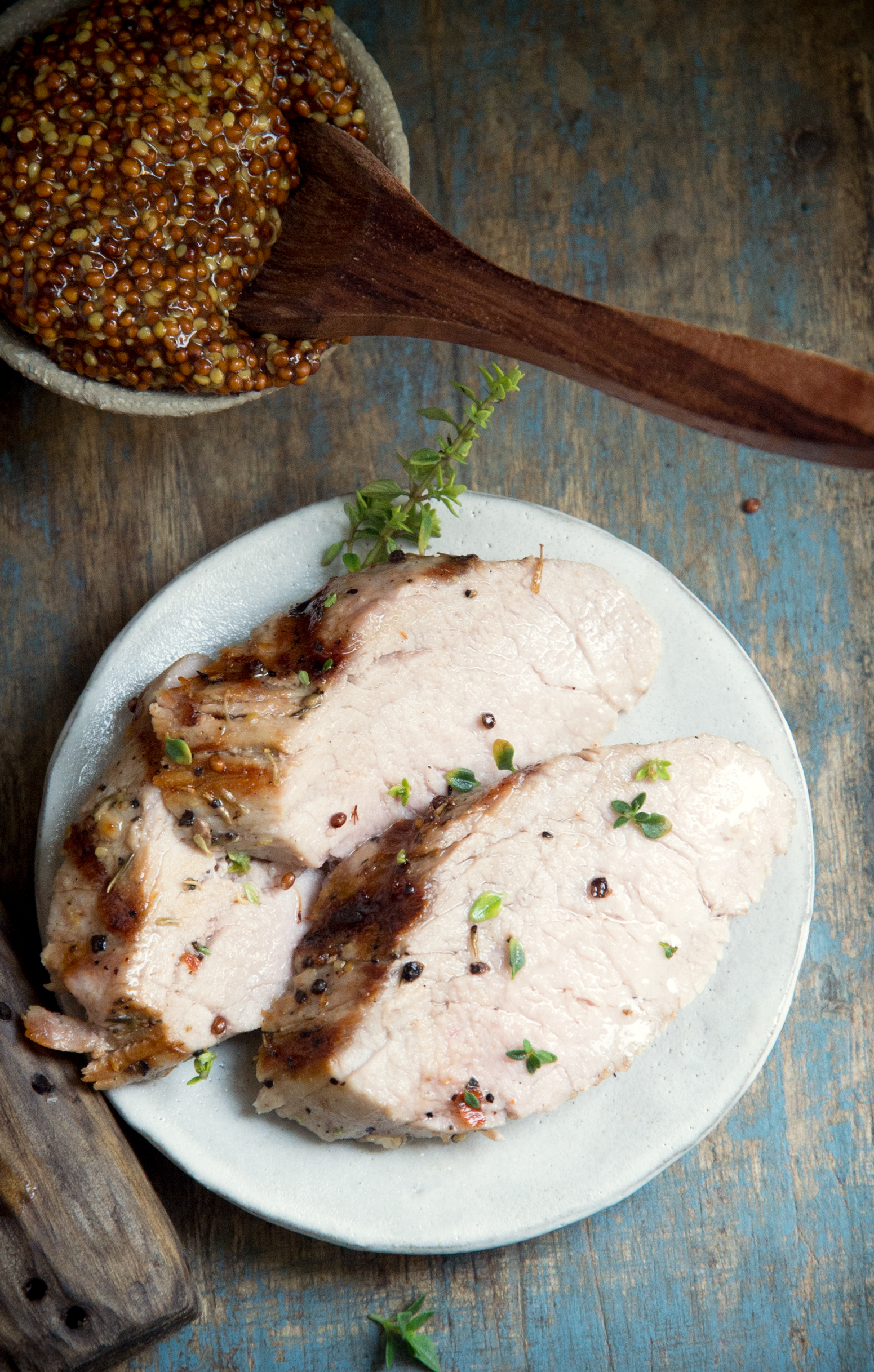
The inspiration
I started making variations of this recipe when I was in chiropractic and naturopathic medical school. At the time, I was taking between 28 and 30 credit hours each trimester and had two kids in middle school who were active in sports and activities. I wanted to make my family home cooked meals needed to make dinner fast!
I find that mixing a bit of oil with a variety of herbs and spices, then rubbing it on meat before grilling created a flavorful, but still quick and easy dinner.
After experimenting with a variety of combinations, I found that one of my favorite flavor profiles for pork was the combination of garlic, mustard, and thyme. Now, I find that a tad bit of red pepper flakes makes the recipe really sing.
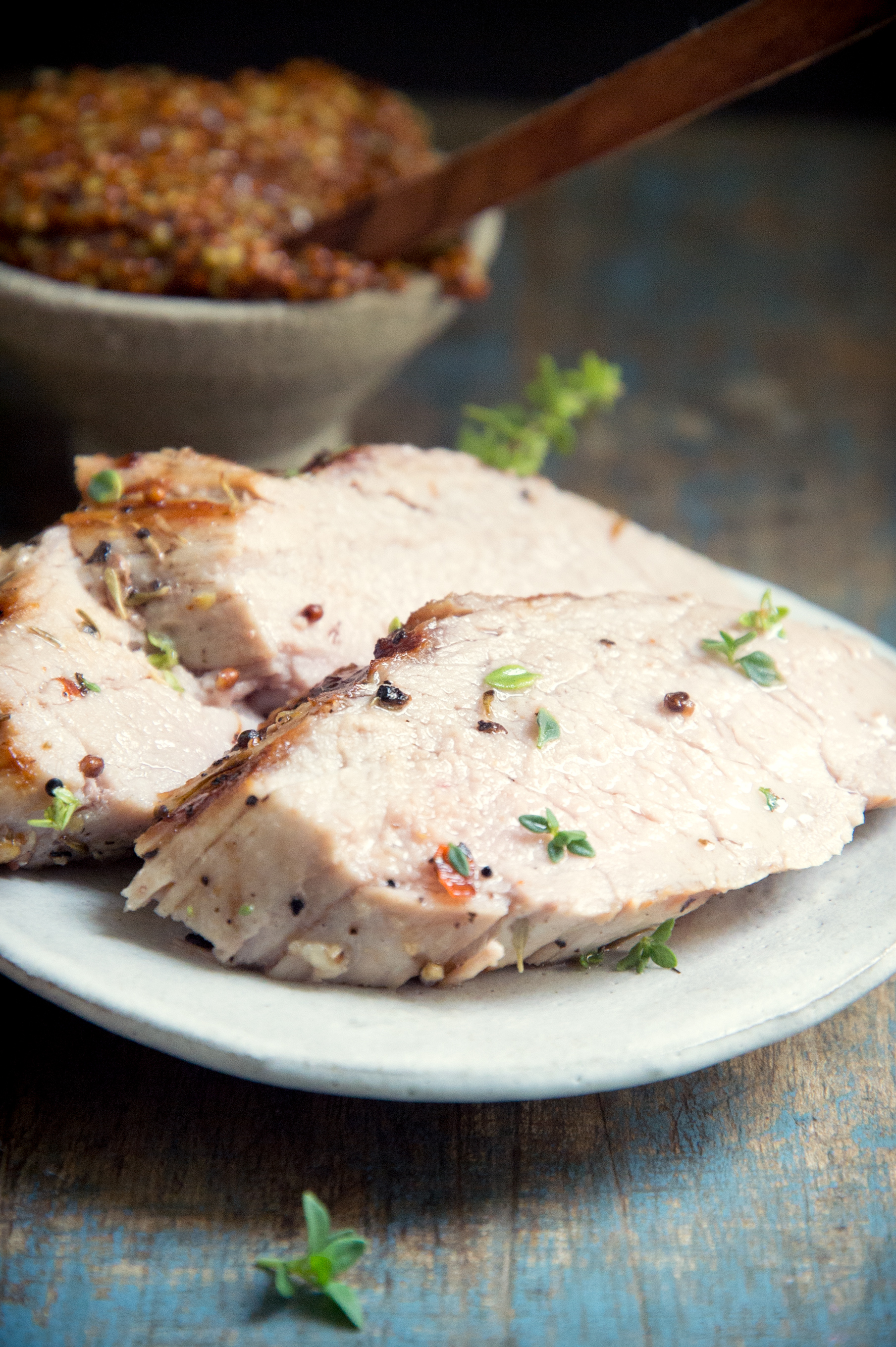
How to grill pork tenderloin
Grilling pork tenderloin is easier than you might think! There are a few tips that will help you get that perfect, flavorful cut of meat.
Preparing the meat
First of all, be sure you start with a pork tenderloin, NOT a pork loin. A pork loin is a much thicker cut of meat and will not cook through using these cooking instructions. A pork tenderloin is a long thin cut that will grill beautifully.
Next, allow the seasoning time to soak into the meat. I usually allow about 20-30 minutes for this process, but you can allow longer. If it’s more convenient to give it several hours, cover the tenderloin and put it in the refrigerator for this time.
Be sure to allow the tenderloin to come to room temperature before grilling. To do this, I just leave the meat on the counter while the seasoning soaks in.
Preparing the grill
Next, it’s important to preheat the grill well before placing the pork tenderloin on the grills. I preheat my grill on high with the cover down.
If you don’t hear a sizzle when you put the meat on the grill, it isn’t hot enough. Preheating is imperative for getting those awesome grill marks we love.
Grilling the tenderloin
Some of this will depend on the type of grill you use. I use an infrared gas grill and this is what works for me. Familiarize yourself with your grill manual as the process may be a little different.
First, I grill my tenderloin over high heat, with the lid open, but turn it often. I think of the pork tenderloin as having four sides, rather than being round.
To turn the meat, I use tongs rather than a fork. This allows me to get the job done without putting holes in the meat. Every time you put a hole in the meat, the juices will run out. Because of this, using tongs results in a juicier result.
I grill on side one for 3-5 minutes, or until there are great grill marks and the meat is browning. Next, I turn the tenderloin over to side 2 and grill for another 3-5 minutes. I repeat this process for sides 3 and 4.
Next, I rotate the cut 90º (this makes the next set of grill marks perpendicular to the first set) and go back to the first side. I grill side one for another 3-5 minutes, or until there is another set of grill marks and the side is golden brown. I repeat this for the other three sides.
Next, I check the pork tenderloin for doneness. See how to do this in the section below. If it is done, I remove the tenderloin from the grill, again using the tongs.
If it is not done, but the outside is golden brown all around, I turn the heat to low. Allow the grill to cool down a few minutes, then close the lid. This allows the grill to become more oven-like and cook through to the middle without burning the outside of the meat.
Allowing the meat to rest
When you remove the tenderloin from the grill, it’s important not to cut it immediately. At this point the meat is still cooking and the temperature is still rising. If you cut it straight off the grill, the juices will all run out.
Instead, give it time to rest for a few minutes. This allows the juices to reabsorb resulting in a juicer roast.
A pork tenderloin needs at least 10 minutes to rest. You may wish to double check the temperature after 5 minutes to be sure it’s going to reach the level of doneness that you prefer.
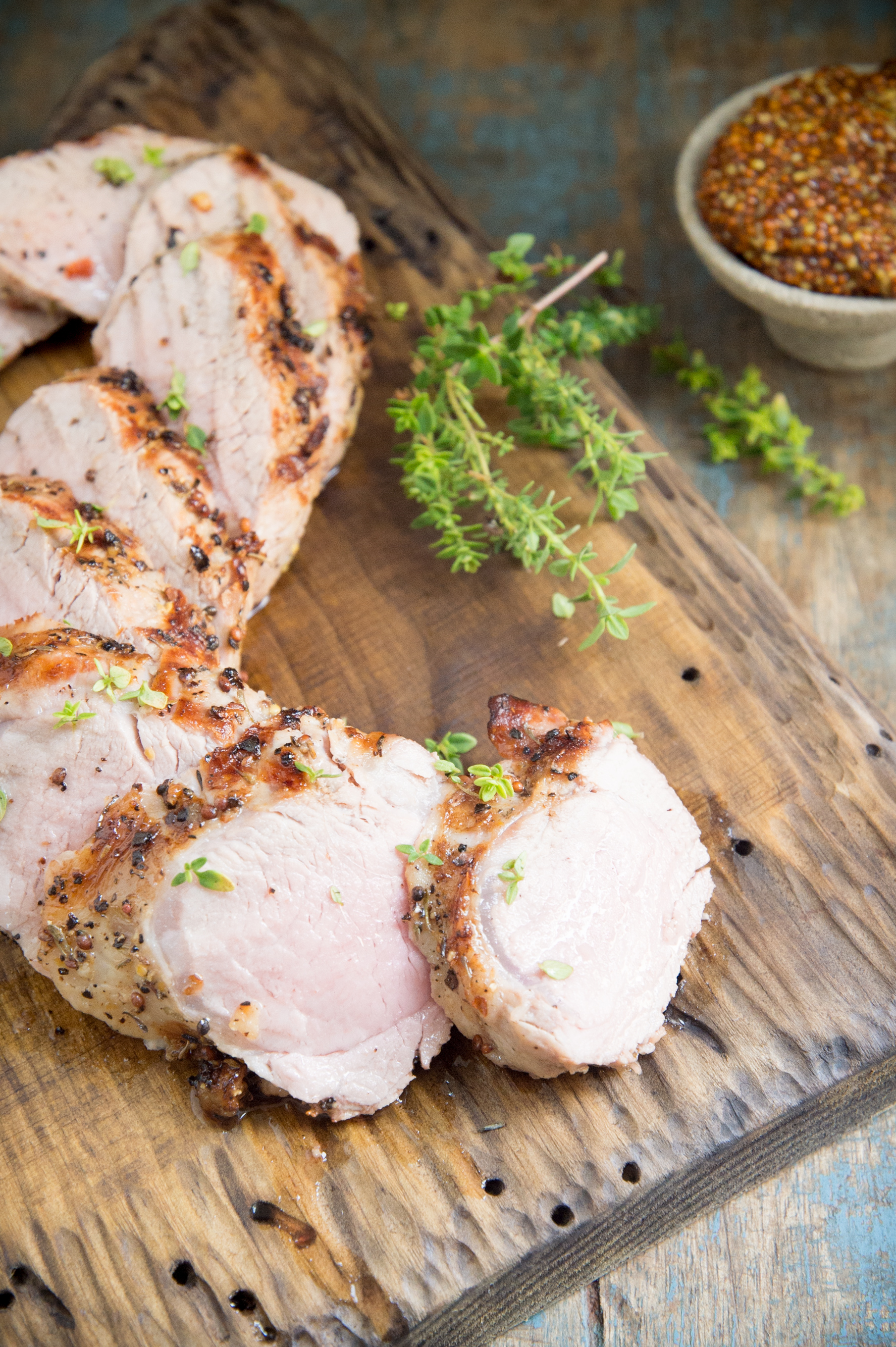
How do you know when pork tenderloin is done
To check the temperature of the pork tenderloin, I first remove it from the grill. Then I insert a meat thermometer into the center of the thickest part of the meat.
While the USDA used to recommend cooking all pork to a temperature of 160º Fahrenheit, they now have relaxed this guideline and recommend cooking a new guideline of 145º Fahrenheit for most cuts. The have maintained the 160º recommendation for any ground pork.
For medium rare pork, you want a temperature of 145º Fahrenheit to 150º Fahrenheit. For medium, you will want the temperature 150-155º Fahrenheit, medium well is 155-160º Fahrenheit. Anything above 160º will be well done. A well done pork tenderloin will be less juicy than the other options.
Remember that with a pork tenderloin, the thinner areas will be more well-done than then thicker ones. This allows you to cater to different preferences using the same cut of meat.
Remember that the temperature will elevate a few degrees while the pork tenderloin is resting. Therefore, I like to remove it from the grill when it’s a few degrees lower than I want it, then double check after it rests for 5 minutes.
What to serve with pork tenderloin
This main course can make a homey family dinner, or be the star for an elegant meal. The sides you choose will make all the difference.
If you want to have a warm family meal, you might want to consider serving it with this Mashed Cauliflower with Smoked Gouda or cauliflower mac and cheese. Our Low-Carb Green Bean and Mushroom Casserole or a simple salad would make a wonderful vegetable.
For a more elegant meal, you could spoon some of this Low Carb Mushroom Gravy over the top of the tenderloin. Veggies such as grilled or oven roasted asparagus, this grilled vegetable salad, or, my personal favorite, Easy Roasted Brussels Sprouts will add elegance to the meal.
However you serve it, you’re going to love how easy this recipe for Grilled Dijon Mustard Pork Tenderloin is! Enjoy!
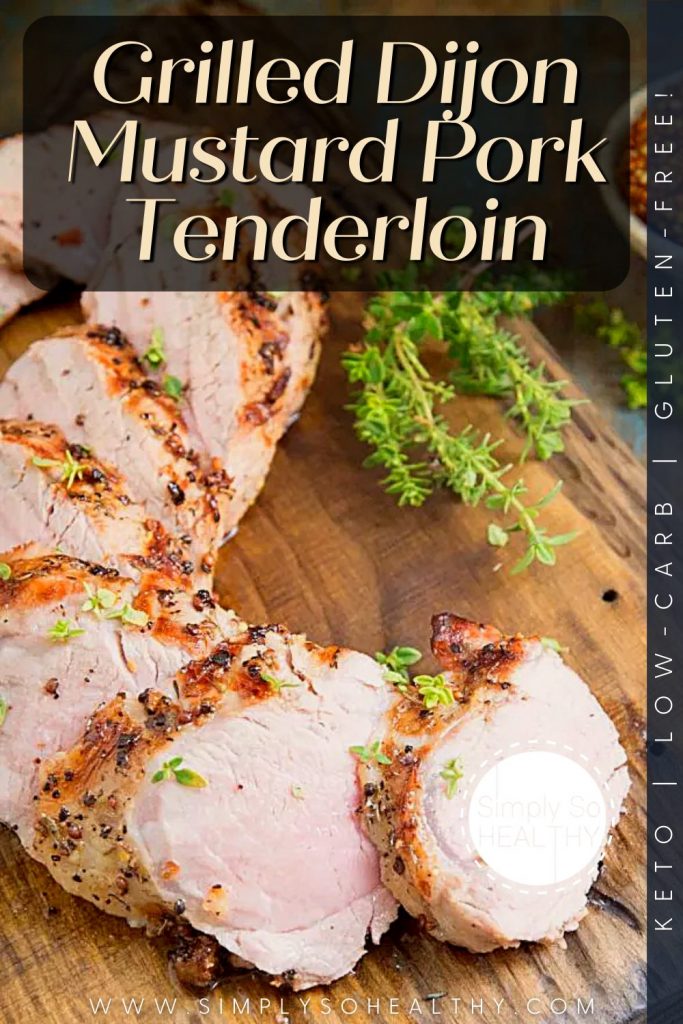
This recipe for Dijon Mustard Pork Tenderloin boasts flavors of dijon mustard, garlic, dried time and just a touch of red pepper flakes to add interest, but not too much heat. It’s grilled to rich golden perfection on the outside, but stays moist and tender on the inside. 🍖😋
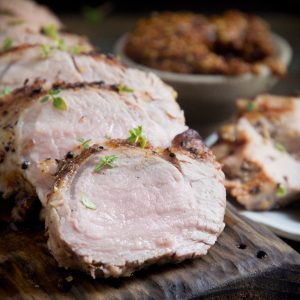
Grilled Dijon Mustard Pork Tenderloin.
This recipe for Grilled Dijon Mustard Pork Tenderloin makes an easy, but succulent main course. If you're looking for the best recipe for grilled pork tenderloin, you've come to the right place! Everyone will love this recipe and it even works for those on a low-carb, keto, Atkins, gluten-free, dairy-free, or Paleo diet.
Ingredients
- 1 tablespoon avocado oil
- 1 teaspoon dijon mustard whole grain
- 1 clove garlic crushed
- 1/4 teaspoon dried thyme
- 1 pinch red pepper flakes
- 1 12-ounce pork tenderloin
- 1/2 teaspoon sea salt
Instructions
- In a small bowl, stir together the avocado oil, dijon mustard, garlic, dried thyme, red pepper flakes, and sea salt.

Rub the seasoning mixture on the pork tenderloin. If desired, allow pork tenderloin to soak in the seasoning and come to room temperature--10-20 minutes. Meanwhile, preheat the grill using high heat.

Grill tenderloin according to your grills instructions.* I grill over high heat with the lid open, turning the meat every 3-5 minutes until the center of the thickest point is one or two degrees below the desired temperature. If all sides are browned, but the tenderloin is not done, decrease the heat to low, allow the grill to cool a few minutes, then close the lid.
Allow the tenderloin to rest for about 10 minutes before cutting. During this time, the internal temperature of the meat will continue to rise a few degrees.

Recipe Notes
*More details and tips on grilling are in the article above the recipe.


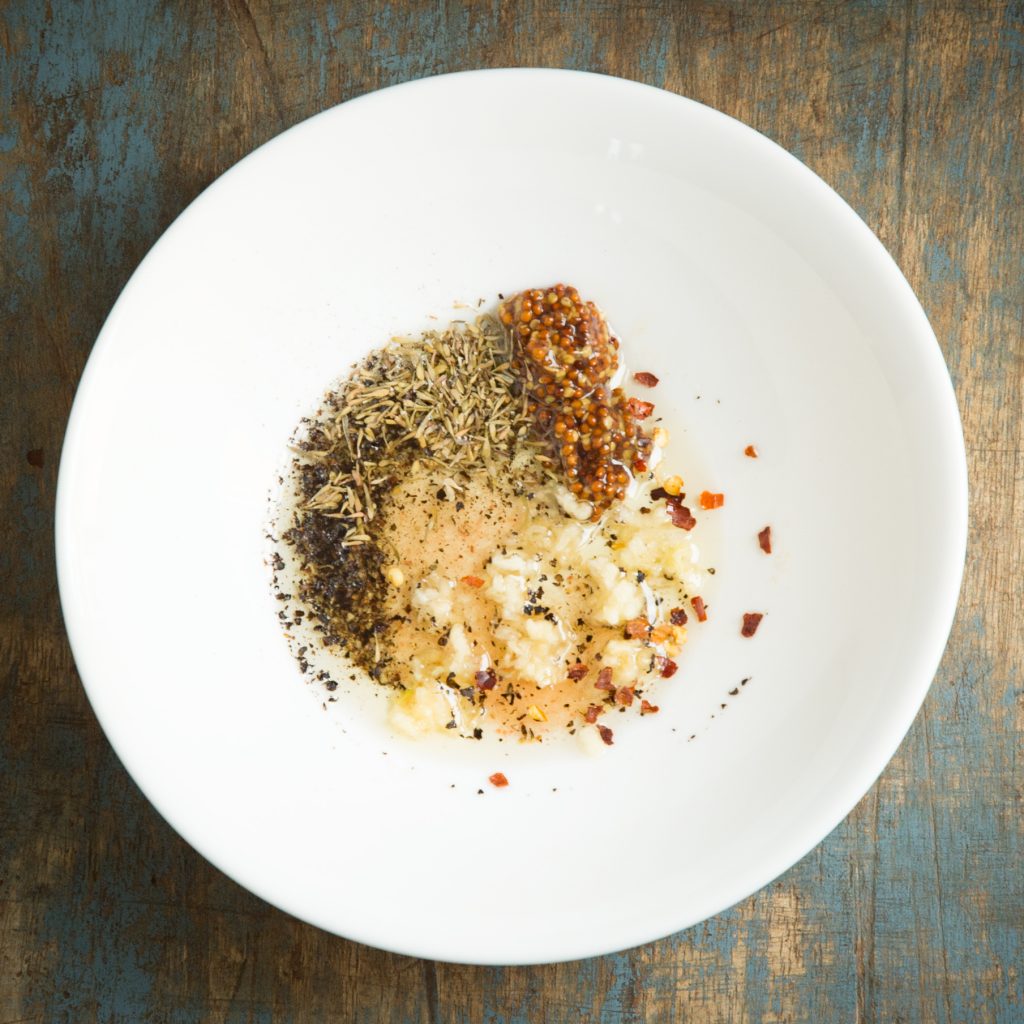
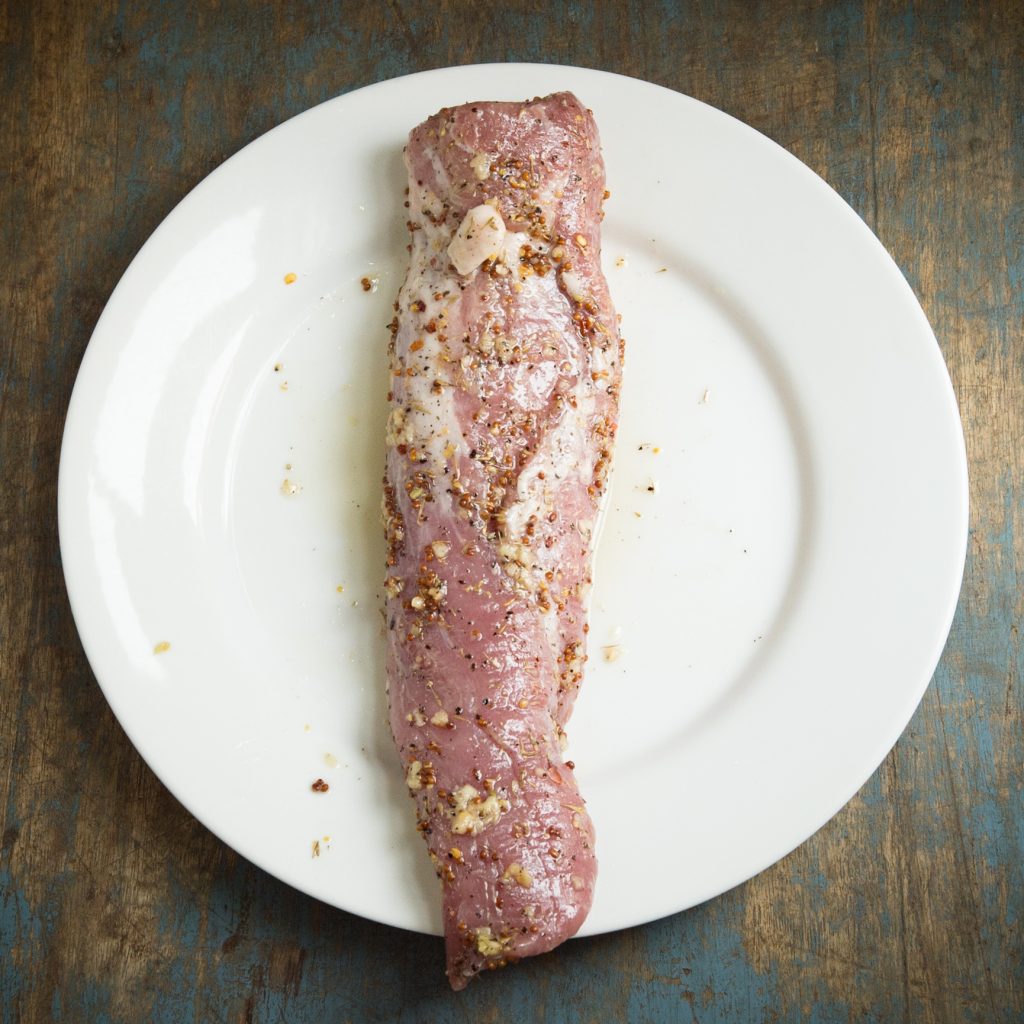
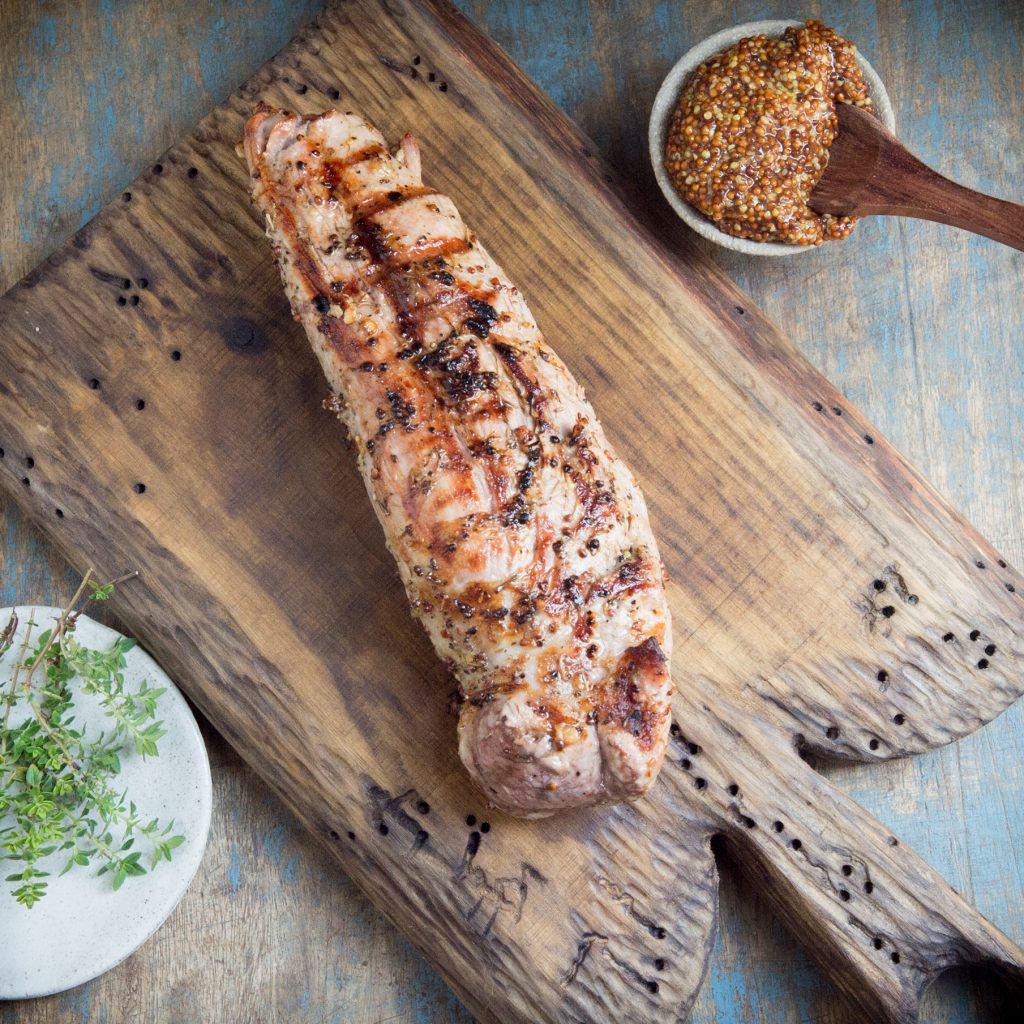


This looks so good! Is there another way you would recommend cooking it if the weather isn’t the best for grilling? Thanks!
Hi Liz,
You could brown it on all sides on the stovetop, the transfer to the oven and allow it to finish cooking. A temp of 400º Fahrenheit would probably work well.
-Annissa